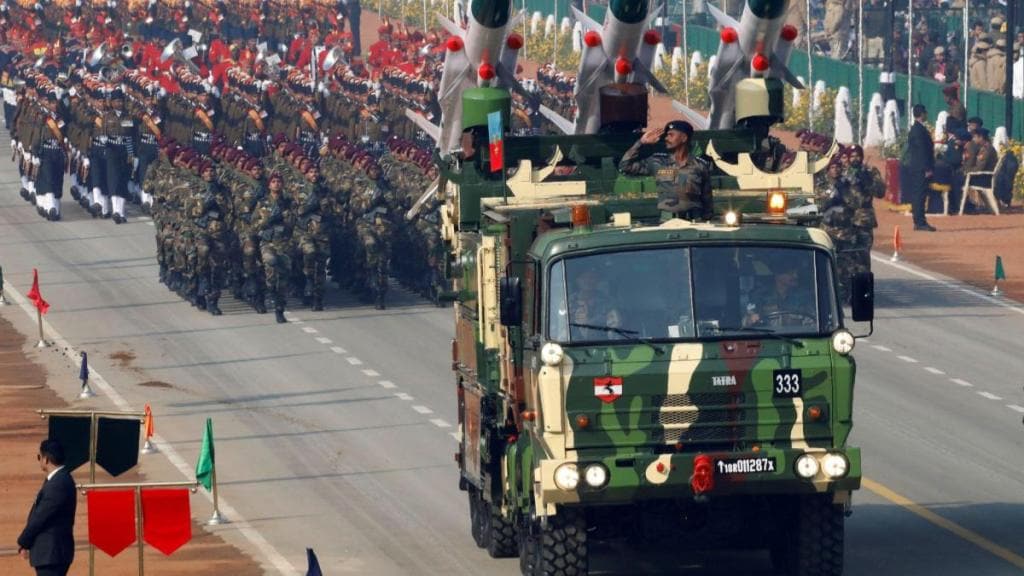By Gaurav Mehndiratta,
In a first, the ministry of defence has announced that it will observe 2025 as the “Year of Reforms”. This is in backdrop of Indian defence production increasing by over 50% from FY21 to FY24, and exports increasing 31 times over the last decade, though on a small base. This has been achieved through policy measures like prioritising indigenisation, implementing multiple positive indigenisation lists, and easing the foreign direct investment (FDI) policy.
Now with Aero India, Union Budget, and a revision of the Defence Acquisition Policy (DAP), 2020, around the corner, there is a lot to look forward to. The dream of a Viksit Bharat in 2047 thus rests on the steps we take. These can be encapsulated in the following.
Innovation: To propel innovation, research and development (R&D) needs to be included within the ambit of indigenous content. Further, while the Make in India programmes and Technology Development Fund (TDF) are promising at fostering innovation, however conditions such as “resident control” restrict their application and thus need reconsideration.
Maintenance, repair and overhaul (MRO): India’s MRO market is set to grow to $4 billion by 2031, according to Niti Aayog. With low-cost, English-speaking and diverse engineering talent, we have the potential not only to fill this demand gap but also to become a global MRO hotspot. Given the synergy of civil aerospace and defence, this will yield both economic as well as strategic benefits in the coming years. While the government has taken care of the goods and services tax (GST) rate on MRO and reduced it to 5% from 18%, the government could make it exempt in order to make it competitive vis-à-vis other MRO hubs like Singapore.
Procurement overhaul: It’s no hidden secret that the entire weapons acquisitions process hasn’t kept pace with time, and the Indian government has acknowledged that these procedures need to be made simpler and time-sensitive. The industry thus looks forward to a procurement overhaul, with international best practices being adapted into the new system.
Appropriate incentives: India’s success with concessional manufacturing tax rates and production-linked incentive (PLI) suggests it’s time to expand the scheme to defence and extend the 15% concessional corporate tax rate to defence manufacturers.
Capital and capability: Still in its nascent stages, the Indian defence sector requires not only capital infusion but also capability to flow from advanced economies. This may be enabled by allowing wholly-owned subsidiaries of foreign original equipment manufacturers (OEMs) to be permitted as “Indian vendors” (that is without the restriction of control and ownership) in all acquisition categories under the DAP 2020. This will help facilitate intellectual property rights — restricted for transfer (due to regulatory or strategic reasons) — which remains challenging in the existing 49% to 74% cap under the DAP 2020.
Tenable budgets: With capital expenditures having a mere 6% increase last year under fiscal pressures and India declaring 2025 as the year of defence reforms, there needs to be a significant increase in capital expenditure to match India’s strategic aspirations.
Indigenous content: DAP 2020 puts a requirement on OEMs to source 50-60% local content from India. In stark contrast to our ambitious indigenous content thresholds, even major defence exporters such as the United States and China are among the world’s 15 largest importers according to the Stockholm International Peace Research Institute, indicating the practical difficulty in having a locally concentrated supply chain. Thus, with India lacking a large portion of the raw materials required, it may be in the best interest of our strategic aspiration to rationalise the threshold to around 30%, like the offset regime.
Further, the extant definition of indigenous content in DAP 2020 emphasises manufacturing but does not incentivise OEMs for crucial services such as engineering support, after-sales support, and skill development; lack of incentives deters OEMs from contributing to India’s defence manufacturing ecosystem, hindering its growth.
Additionally, the absence of strategic multipliers for domestic sourcing/investment in defence industrial corridor and micro, small, and medium enterprises with a lack of clarity on computational and procedural aspects causes their own hardships.
India’s road to indigenisation
A close engagement between the private industry and the government is critical to achieve a robust and innovative defence policy alongside adequate budgetary allocations. The good news is that there is a concerted effort by the government to continuously engage with industry to understand their concerns and shape their actions. As we step into the year of defence reforms and with revisions in the DAP 2020 imminent, we hope this continued collaboration helps realise our aatmanirbharta (self-reliance) dream sooner than expected.
With inputs from chartered accountants Manan Asri and Sidhant Goyal. The author is Partner and head, aerospace and defence with KPMG in India.
Views expressed are his own and not necessarily those of financialexpress.com

